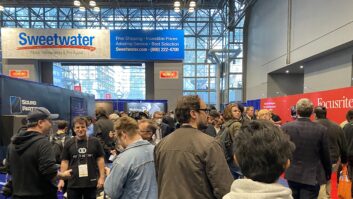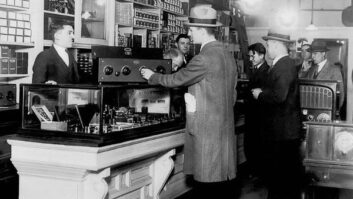
Thomas Lund (left) and Esben Skovenborg
TC Electronic announces that Thomas Lund, the company’s CTO for Broadcast & Production, and Esben Skovenborg (Ph.D.), its Senior Research Engineer, received one of two Best Peer-Reviewed Paper Awards from the Audio Engineering Society at the recent 135th AES Convention in New York City for Convention Paper 8983: “Level-Normalization of Feature Films Using Loudness vs Speech.”
“Needless to say, we’re very honored to receive this award that recognizes our scientific research methods as well as our contribution to the field of loudness technology,” says Skovenborg. “Although TC and others have provided loudness solutions for years, considerable challenges remain, and by basing new products and technology on empirical research we are better able to serve the needs of the broadcasters and audio engineers.”
“We felt it was important to make this study as films may be made for cinema, but are often viewed on TV, where they have to co-exist with all kinds of program material in terms of audio loudness,” Lund says. “Further, even if we look at film in an isolated context, there’s also a loudness war going on in cinema, and we were trying to understand the reasons why. In broadcast, as well as in cinema, it appears the Number One goal is to get the overall loudness suitable without hampering speech intelligibility. Speech level is less important.”
The Paper Abstract is as follows: “We present an empirical study of the differences between level-normalization of feature films using the two dominant methods: loudness normalization and speech (‘dialog’) normalization. The sound of 35 recent ‘blockbuster’ DVDs were analyzed using both methods. The difference in normalization level was up to 14 dB, on average 5.5 dB. For all films the loudness method provided the lowest normalization level and hence the greatest headroom. Comparison of automatic speech measurement to manual measurement of dialog anchors shows a typical difference of 4.5 dB, with the automatic measurement producing the highest level. Employing the speech-classifier to process rather than measure the films, a listening test suggested that the automatic measure is positively biased because it sometimes fails to distinguish between ‘normal speech’ and speech combined with ‘action’ sounds.”
The full paper can be purchased for $20 by non-members, or $5 by AES members, from the AES Store.
The paper is free for AES E-Library subscribers at www.aes.org/e-lib.
More papers on loudness by Thomas Lund and Esben Skovenborg can be found at tcelectronic.com/loudness/literature-glossary.
The other Best Peer-Reviewed Award went to Convention Paper 8924, “Proposal of Optical Wave Microphone and Physical Mechanism of Sound Detection,” written by Yoshito Sonoda and Toshiyuki Nakamiya of Tokai University in Kumamoto, Kumamoto, Japan.







